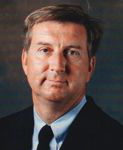- COVID-19
- Biosimilars
- Cataract Therapeutics
- DME
- Gene Therapy
- Workplace
- Ptosis
- Optic Relief
- Imaging
- Geographic Atrophy
- AMD
- Presbyopia
- Ocular Surface Disease
- Practice Management
- Pediatrics
- Surgery
- Therapeutics
- Optometry
- Retina
- Cataract
- Pharmacy
- IOL
- Dry Eye
- Understanding Antibiotic Resistance
- Refractive
- Cornea
- Glaucoma
- OCT
- Ocular Allergy
- Clinical Diagnosis
- Technology
Analysis: Aging and obesity in the United States
Changing demographics in the United States will require ophthalmology practices to adopt strategies to deliver care to large numbers of diabetic and elderly patients. Possible steps could include more effective use of support staff and increasingly efficient practice patterns.

Neville takes some solace in knowing that he is not alone and that a lot of "cool" people also are 50 years old. People born the same year as my friend include Alec Baldwin, Annette Bening, Madonna, Ellen Degeneres, Jamie Lee Curtis, Sharon Stone, Michelle Pfeiffer, and Michael Jackson. (OK, maybe it makes him a little uncomfortable knowing he has anything in common with Michael Jackson.)
A happening age
Blessed with reasonably good looks and metabolism, Neville never has undergone any cosmetic procedures. But according to the American Academy of Cosmetic Surgery, he is behind his peers; the average age of Americans undergoing invasive cosmetic surgery (liposuction, face-lifts, etc.) is now 42.6 years.
The Age Discrimination in Employment Act of 1967 protects individuals who are aged 40 or more years from employment discrimination based on age. Neville isn't thrilled that he is old enough to deserve protection from the government because of his age. He received his letter from the AARP this week offering him membership in the powerful and rapidly growing organization. Clinging to his self-image as still being a young man, he definitely was not honored by this invitation.
Changing demographics
Neville's milestone caused me to ponder the changing demographics of our country. Sadly, as a nation, we are getting old and fat. According to the Centers for Disease Control and Prevention, if current trends hold, one in three children (to be precise: 39% of girls and 33% of boys) born in the United States in the year 2000 will develop diabetes. The United States is not alone in facing an epidemic of obesity and diabetes. In one country I visited this year, the prevalence of diabetes is now an astounding 20%.
It's unfair, but, like Neville (whose weight is fine), collectively we all are getting older, the U.S. Census Bureau reports. In 2030, when all of the baby boomers will be aged 65 or more years, nearly one in five U.S. residents is expected to be aged at least 65 years. That age group is projected to increase to 88.5 million in 2050, more than doubling the number in 2008 (38.7 million). The number of Medicare beneficiaries in the United States, therefore, is about to grow dramatically (Figure 1).
Major implications
The implications for ophthalmologists are major. We will need to develop strategies allowing us to deliver care to all the diabetic and elderly patients that will be flowing into our offices. Given that the number of ophthalmologists trained each year in the United States is not increasing significantly, and that most ophthalmologists I know already are working quite hard, our profession will have to be innovative to address the problem. More effective use of support staff, increasingly efficient practice patterns, etc., will be needed to meet the need.
One thing that shocks Neville is the insensitivity prevalent among his so-called friends and acquaintances. When he laments turning 50, rather than receiving sympathy, he typically is told to quit whining.
But Neville understands that the reaction is predictable. It is only natural that others are jealous and envious. No matter his chronological age, Neville always will be young. He is a surfer.
By Peter J. McDonnell, MD director of the Wilmer Eye Institute, Johns Hopkins University School of Medicine, Baltimore, and chief medical editor of Ophthalmology Times. He can be reached at 727 Maumenee Building, 600 N. Wolfe St., Baltimore, MD 21287-9278 Phone: 443/287-1511 Fax: 443/287-1514 E-mail: pmcdonn1@jhmi.edu
